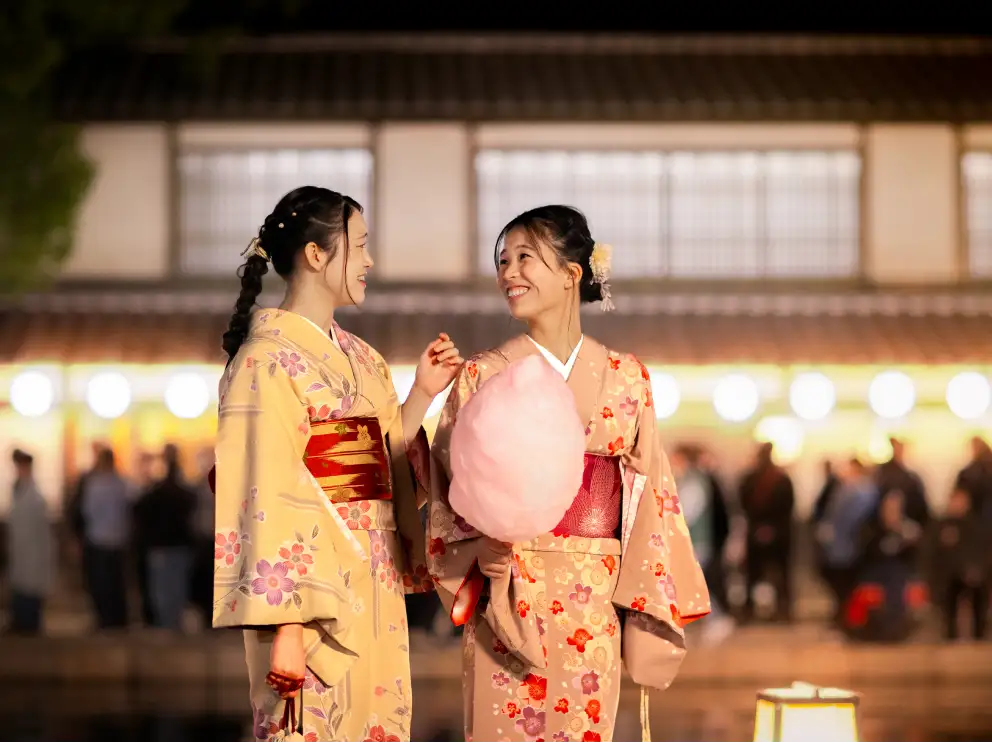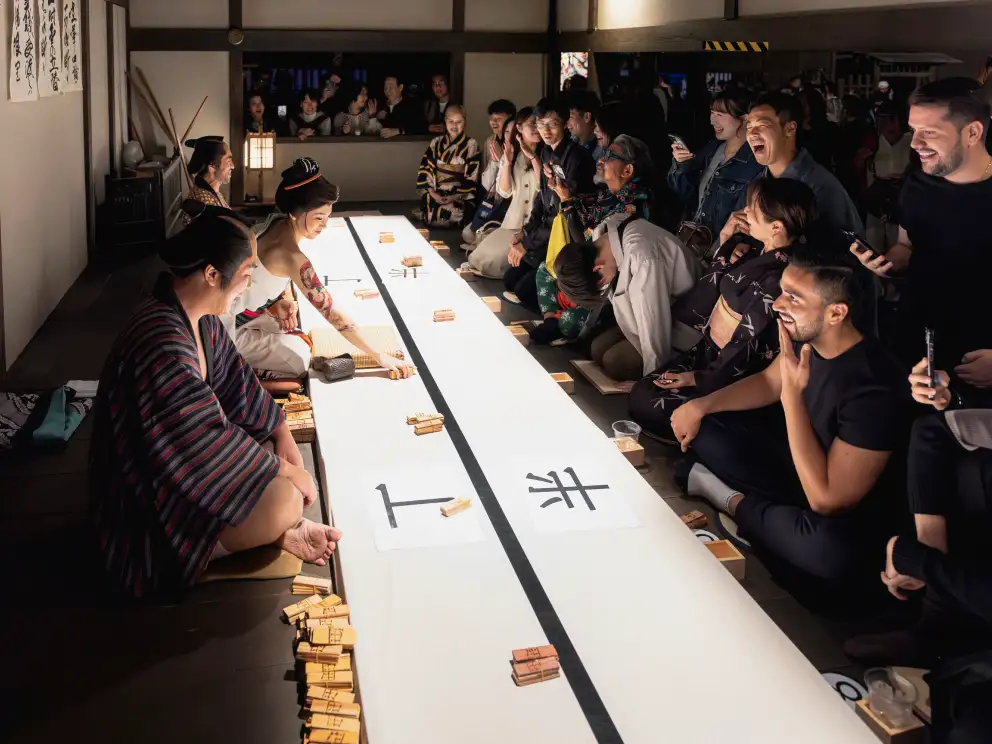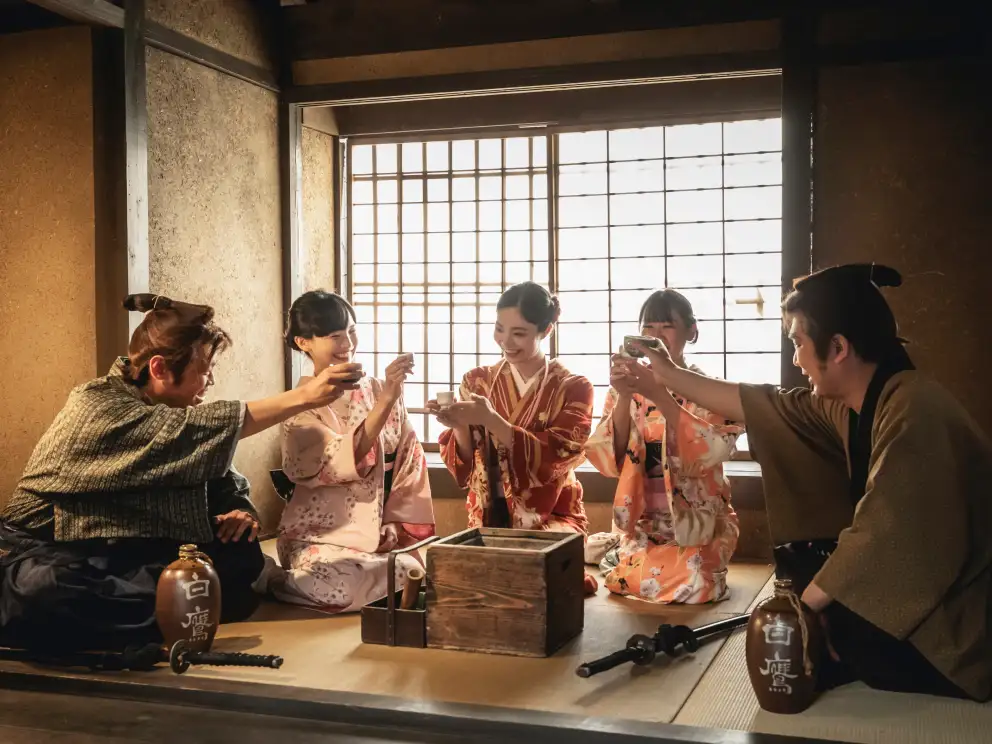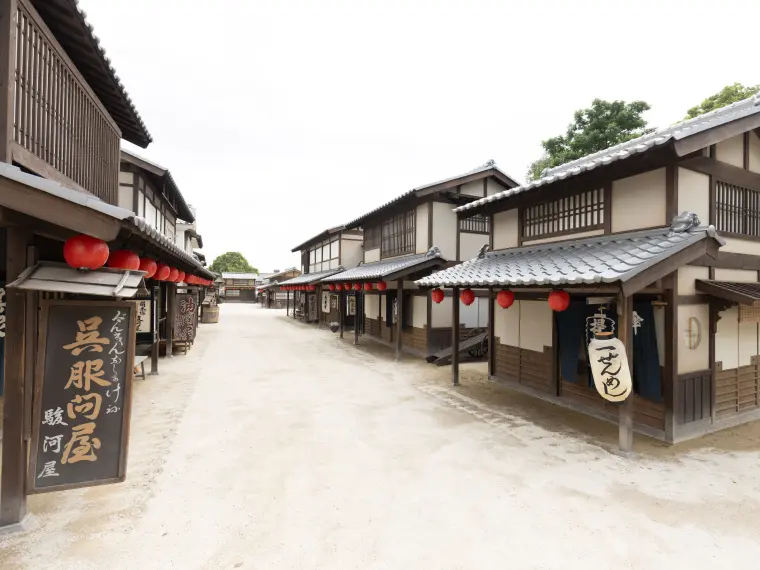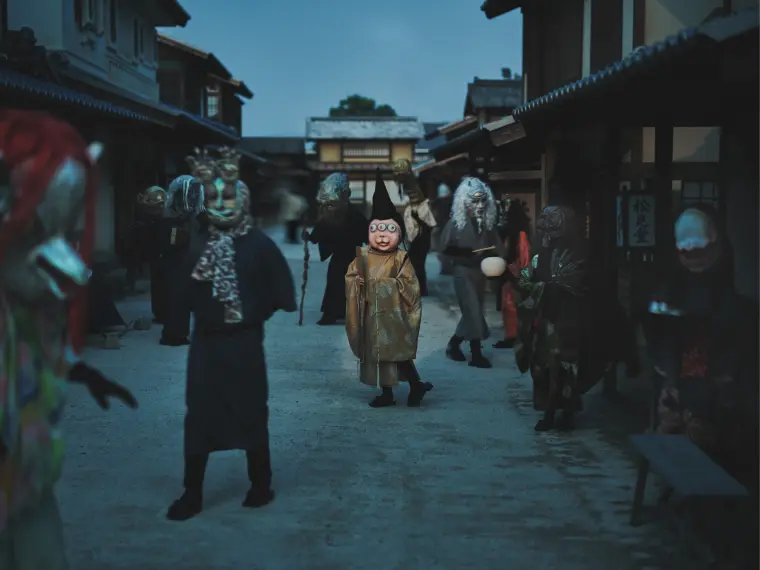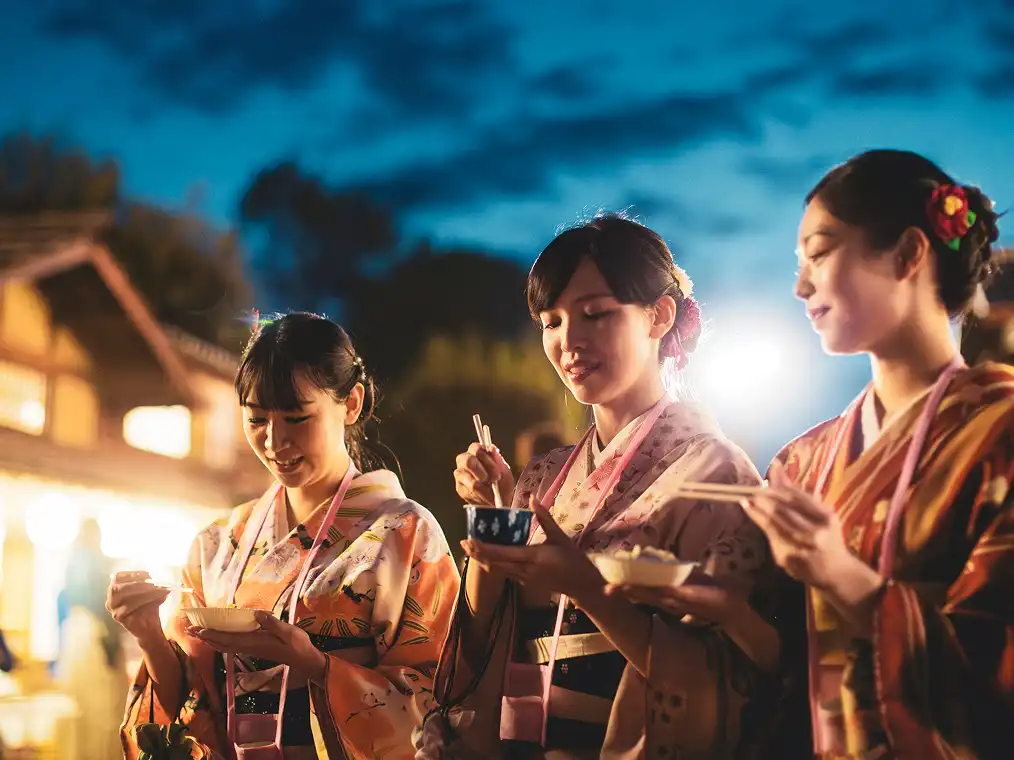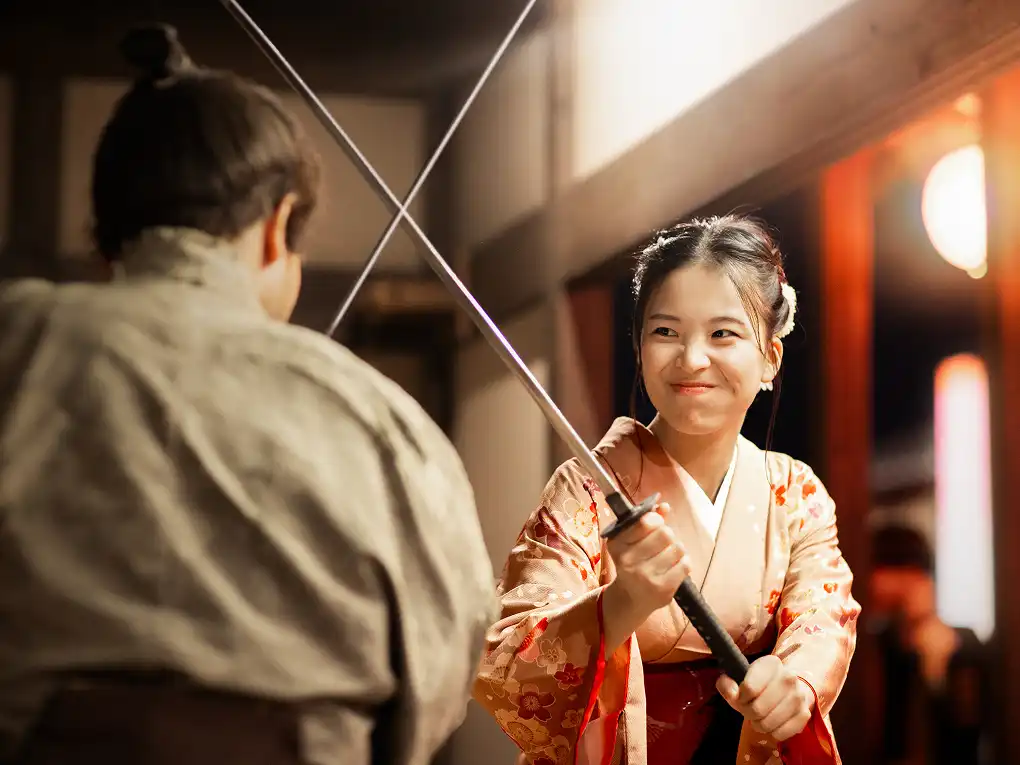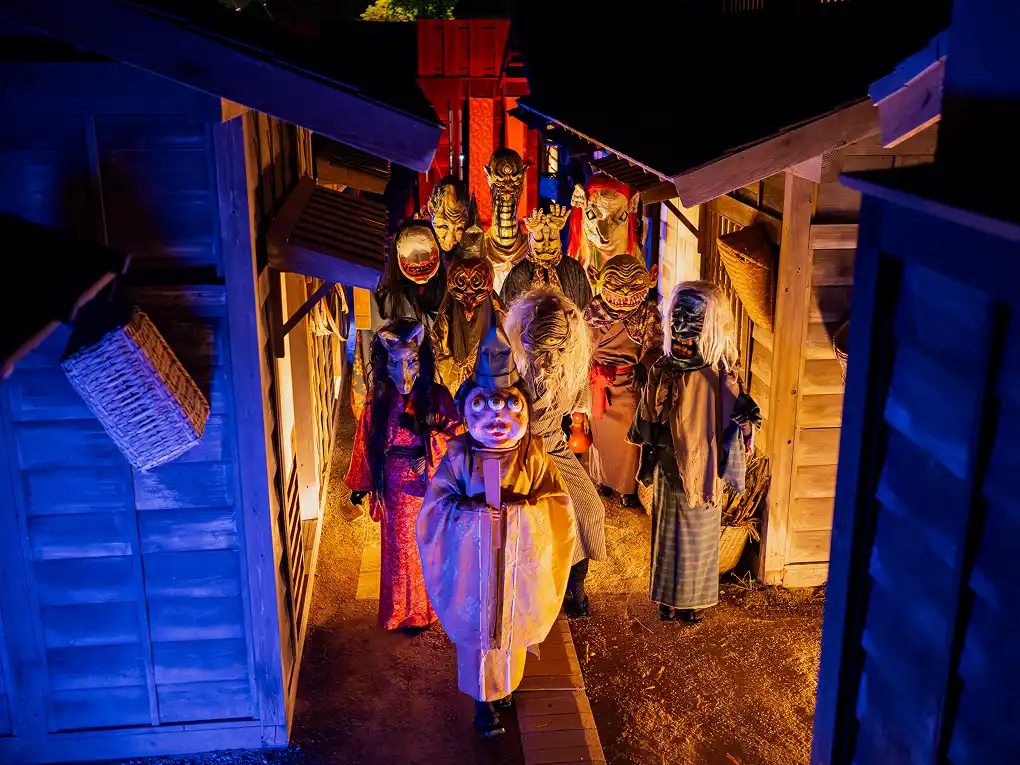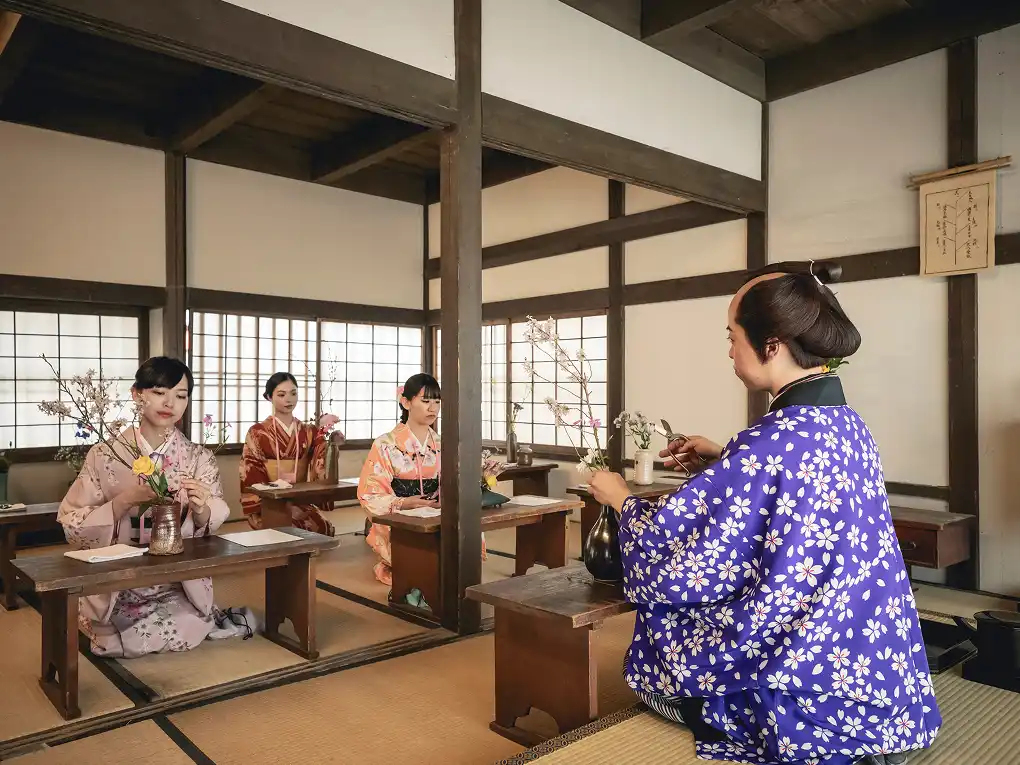A sophisticated, immersive-experience park
where you can step into the world of Edo-period Kyoto
March 28, 2026:
Phase 1 Re-opening

About
Uzumasa Kyoto Village
Uzumasa Kyoto Village (managed by Toei Uzumasa Eigamura Co.,Ltd.) was established in 1975 and is the only theme park in Japan where guests can experience the filming of Jidaigeki (period dramas/films). At its peak, more than 200 films per year were filmed there. Guests can walk freely around the park’s open sets while feeling the atmosphere of Edo-period Japan, and also enjoy a variety of events and attractions such as the Kai Kai Yokai festival, ninja shows, dressing up as samurai and geisha, and more.
-
壱
1
Immersive Live Shows
Upon setting foot inside the park, you enter a world where Edo-period Japan comes to life.
This new style of entertainment lets you do more than just watch―you become part of the story.
Information to be released in February 2026 -
弐
2
Cultural Experiences
Experience the world of Japanese culture, from tea ceremony and flower arrangement to Noh, Kyogen, and more, in the setting of an Edo-period town.
Your teachers will guide you every step of the way for an authentic cultural experience made easy.
Information to be released in February 2026 -
参
3
Attractions
A ninja attraction where a small adventure begins as you play.
More and more surprises and discoveries unfold with each experience.
Information to be released in February 2026 -
肆
4
Kimono experience
Put on your favorite kimono for an extra level of enjoyment. It’s a great way to further deepen your experience in an Edo-period town.
Add a touch of the extraordinary to your time here.
Information to be released in February 2026 -
伍
5
Dining
From time-honored to cutting-edge, savor a multitude of Japanese flavors that delight all five senses.
These delectable tastes can be enjoyed both while dining in or on the go. -
陸
6
Shops
Have a shopping experience filled with discoveries and Japan-inspired items you can only find here.

Enjoy the new park at night as well
A sophisticated nighttime experience awaits, illuminated by the soft glow of Japanese lanterns. Discover a new way to enjoy Kyoto, with a different atmosphere and immersive experience than what is available during the daytime.
BRAND RENEWAL
Explanation of the New Name
With Phase 1 re-opening, the name of the park will be changed to Uzumasa Kyoto Village.
Uzumasa is considered sacred ground for Japanese cinema, as it was where the studios for eight film companies were located. This special place embodies the very history of Japanese film. The inclusion of “Uzumasa” is a reflection of our desire for visitors to more deeply and broadly experience the film culture and local history that have existed here for so many years.
“Village” was included to signify the spirit of warmth and bonds between people, as well as the preservation of traditional culture.
Brand Colors
Black
Ink black evokes both Japanese tradition and the “fade to black” often seen in movies.
It is the color often seen on the signs that blend into Kyoto‘s traditional streetscapes, the calligraphy on the open sets on the grounds of Toei Kyoto Studio Park, and also the color that is reminiscent of the anticipation-filled moment of darkness right before the start of a movie or stage performance.
This is a shade of white with a slightly yellowish tinge, like that of white glossed silk.
The origins of Kyoto‘s famous Nishijin-ori textiles are said to lie in the introduction of silk materials to the area by the Hata (秦) clan. This area was named “Uzumasa (太秦)”, which means “the base of the Hata clan,” and thus the silk color can be said to symbolize Kyoto‘s silk textiles and the traditions of Uzumasa.
SCHEDULE
-
1
Start of ticket sales
Site opensEarly February 2026 (tentative)
-
2
Phase 1 opening
March 28, 2026
-
3
Phase 2 opening
Spring 2027 (tentative)
- 5 new restaurants and shops open
- Nightlife District Zone opens
-
4
Phase 3 opening
Spring 2028 (tentative)
- Nakamura-za
Theater (tentative name) opens
*A bathing facility is planned from 2028 onward.
- Nakamura-za
ACCESS
Located just 30 minutes from Kyoto Station, UZUMASA KYOTO VILLAGE offers convenient access from major cities across Japan.
- 30 minutes by train from Kyoto Station
- 1 hour by train from Osaka Station
- 2 hours 30 minutes from Hiroshima Station (via Shinkansen and local train)
- 3 hours from Tokyo Station (via Shinkansen and local train)


